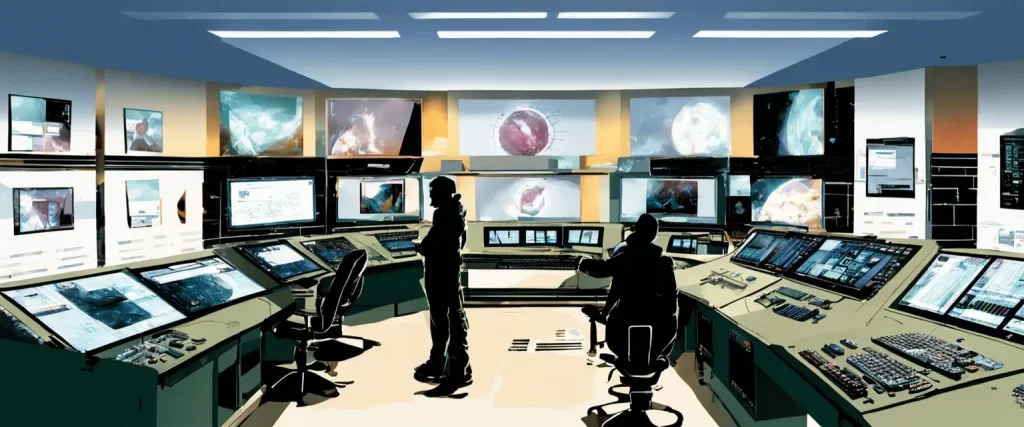In “Meltdown: Why Our Systems Fail and What We Can Do About It,” Chris Clearfield explores the intricate relationship between complex systems and devastating failures. By analyzing numerous catastrophic incidents across various industries, Clearfield offers invaluable insights into the inherent fragilities of modern organizations and provides practical strategies to prevent and mitigate such disasters. As a recognized expert in system failures, Chris Clearfield has dedicated his career to understanding why catastrophic events occur, drawing from his extensive background in finance, policy, and risk management. With his co-author, Andras Tilcsik, he skillfully combines captivating anecdotes with thorough research to shed light on the vital importance of anticipating and addressing potential system failures.
Chapter 1: Introduction
Clearfield begins by explaining that as our world becomes increasingly interconnected and interdependent, our systems have become more complex. Whether it is financial markets, healthcare, transportation, or technology, these systems are designed to be efficient and effective but are vulnerable to failure.
The author asserts that these failures often occur due to unexpected interactions between components within the system, known as “normal accidents.” He provides examples such as the 2008 financial crisis, the Deepwater Horizon oil spill, and the 2011 Fukushima nuclear disaster to illustrate how such accidents can have catastrophic consequences.
Clearfield emphasizes that these failures are not due to individual negligence or incompetence but are systemic in nature. He introduces the concept of “tight coupling,” where components are highly interdependent and failure in one part can quickly cascade throughout the entire system. This tight coupling, coupled with complex interactions and the presence of multiple stakeholders, creates the perfect conditions for failure.
He also highlights the role of cognitive biases and organizational culture in exacerbating the likelihood and consequences of failures. Drawing from extensive research in fields such as psychology, economics, and systems theory, Clearfield establishes the need for a better understanding of system failures and proposes practical solutions to mitigate them.
In conclusion, Chapter 1 of “Meltdown” sets the stage for further exploration into the causes and consequences of complex system failures. It emphasizes the systemic nature of these failures, the importance of understanding the interdependencies within systems, and the need for effective strategies to prevent and manage crises.
Chapter 2: Understanding Complexity
Chapter 2 of “Meltdown” by Chris Clearfield focuses on the understanding of complexity and its impact on organizations and systems. Clearfield argues that as systems become more complex, they also become increasingly vulnerable to catastrophic failures, or meltdowns.
The chapter begins by discussing the concept of coupled systems, where small failures in one part can quickly cascade to affect other interconnected parts. Clearfield uses the example of the 2003 Northeast blackout in North America to illustrate how a single electrical line failure triggered a chain reaction, causing power outages across multiple states and provinces.
Clearfield then introduces a framework called the Cynefin Model, developed by Dave Snowden, to understand complex systems. The model categorizes systems into simple, complicated, complex, and chaotic. Simple systems are predictable and have clear cause-and-effect relationships, while complicated systems involve multiple variables and require expertise to analyze. Complex systems, on the other hand, exhibit emergent behaviors and are characterized by interdependencies that can be difficult to fully understand. Chaotic systems are completely unpredictable.
The author emphasizes that many organizations are unable to grasp the complexity of their systems, leading to unintended consequences and meltdowns. He highlights examples such as the 2008 financial crisis and the Deepwater Horizon oil spill to demonstrate the failures resulting from the failure to comprehend complexity.
Clearfield concludes the chapter by discussing the engineering concept of “tight coupling” within systems. He explains that tightly coupled systems, where components are highly interdependent with little redundancy, are more susceptible to catastrophic failures. On the other hand, loosely coupled systems can contain and isolate failures, preventing them from spreading.
In summary, Chapter 2 of “Meltdown” explores the concept of complexity and its implications for organizations. It emphasizes the need to understand complexity, use appropriate models like the Cynefin Model, and ensure that systems are designed with appropriate levels of coupling to avoid catastrophic failures.
Chapter 3: Cognitive Biases and Decision-Making
Chapter 3 of Meltdown by Chris Clearfield, titled “Cognitive Biases and Decision-Making,” discusses the factors that can hinder our decision-making abilities and lead to critical failures. Clearfield emphasizes the role of cognitive biases, which are inherent flaws in our thinking process that can cloud judgment and lead to poor decision-making.
The chapter begins by exploring the concept of “bounded rationality,” which refers to our limited ability to fully comprehend complex systems. This limitation is further exacerbated by cognitive biases such as confirmation bias, where we cherry-pick information that aligns with our preexisting beliefs, and availability bias, where we rely heavily on the most readily available information. Clearfield highlights several real-world examples, including the devastating decision-making failures during the 2008 financial crisis, to demonstrate how these biases can have wide-ranging consequences.
Additionally, the chapter delves into cognitive biases that result from our need for social acceptance and conformity. The author covers the concept of groupthink, where individuals within a group prioritize consensus over critical analysis, often leading to poor decision-making.
Clearfield also explores the concept of hyper-competition and how it can amplify cognitive biases. In a competitive landscape, individuals and organizations may succumb to the pressure of taking excessive risks or making hurried decisions, which can result in catastrophic failures.
The chapter concludes with a call to action, emphasizing the need for individuals and organizations to be aware of cognitive biases and proactively mitigate their effects. Clearfield suggests building systems and processes that encourage diverse perspectives, critical thinking, and continuous learning to improve decision-making.
Overall, Chapter 3 of Meltdown provides a comprehensive overview of cognitive biases and their role in decision-making, highlighting the importance of understanding and addressing these biases to avoid costly failures.
Chapter 4: Engineering Failures

Chapter 4 of the book “Meltdown: Why Our Systems Fail and What We Can Do About It” by Chris Clearfield explores the concept of engineering failures and their causes, with a focus on the Challenger space shuttle disaster and the Fukushima nuclear accident.
The chapter begins with the Challenger space shuttle disaster in 1986. It highlights how a series of organizational and engineering failures led to the explosion of the shuttle just 73 seconds after takeoff, resulting in the tragic loss of all seven crew members. The author emphasizes the importance of understanding the underlying system-level causes of the accident rather than attributing it solely to technical failures. The decision-making process, communication breakdowns, and organizational pressures to meet deadlines contributed to the disaster.
The narrative then shifts to the Fukushima nuclear accident in 2011. Clearfield explains how a combination of natural disasters, political factors, and inadequate engineering design led to a catastrophic meltdown at the Fukushima Daiichi nuclear power plant. The chapter discusses the impact of the earthquake and tsunami, as well as the flawed decision-making processes and lack of effective contingency plans that exacerbated the scale of the disaster.
Overall, the chapter demonstrates that engineering failures are rarely caused by a single technical glitch, but are complex events influenced by a combination of human factors, communication breakdowns, and systemic inadequacies. Clearfield argues that in order to prevent such failures, we must holistically assess and address the entire system rather than solely focusing on technical aspects. It highlights the importance of incorporating lessons learned from these failures into engineering practice to foster resilient systems.
Chapter 5: Financial Meltdowns
Chapter 5 of “Meltdown” by Chris Clearfield examines the causes and consequences of financial meltdowns. The chapter starts by discussing the growth of complex systems and interconnectedness, particularly in the financial industry. Clearfield explains how these complex systems can become vulnerable to unexpected crises and why financial institutions struggle to manage them effectively.
The author delves into the concept of moral hazard, highlighting how the perception of safety can create reckless behavior. He uses the example of the 2008 financial crisis, where the belief in the invincibility of the housing market led to excessive risk-taking by banks and financial institutions. Clearfield also explores the role of cognitive biases, such as overconfidence, in contributing to financial meltdowns.
Furthermore, the chapter explores the phenomenon of “too big to fail” and its implications for the financial system. Clearfield argues that the notion of bailouts for large institutions creates a moral hazard by incentivizing reckless behavior and limiting the consequences of failure. He discusses the challenges of breaking up these institutions and implementing regulations to prevent future financial crises.
The author offers insights into the importance of systemic risk, emphasizing the need to identify and mitigate it effectively. He states that traditional risk management strategies often fail to address the intertwined nature of complex systems, resulting in unforeseen consequences. Clearfield suggests a more holistic approach that incorporates a robust understanding of the entire system.
Overall, Chapter 5 of “Meltdown” provides a comprehensive analysis of the causes of financial meltdowns, including moral hazard, cognitive biases, and the challenges posed by interconnectedness. The chapter argues for the need to reassess risk management strategies and implement systemic changes to prevent future crises.
Chapter 6: Healthcare Disasters
Chapter 6 of “Meltdown” by Chris Clearfield focuses on healthcare disasters, exploring the various factors that contribute to failures and providing real-life examples to illustrate the issues. The chapter highlights how the complex and interconnected nature of healthcare systems can often lead to unforeseen consequences and potential catastrophes.
Clearfield emphasizes the importance of understanding the concept of coupling, where the failure of one component or process in the healthcare system can have extensive consequences on other interconnected parts. The chapter dives into various examples of healthcare meltdowns, such as the case of the overdosed patient Emily Jerry, the spread of antibiotic-resistant infections, and the unintended consequences of electronic health records systems.
The author argues that high-technology solutions, while often eulogized as the answer to healthcare issues, can sometimes create new vulnerabilities. For instance, electronic health record systems, despite their immense potential, can lead to user errors due to poor interface design or usability issues. Moreover, the reliance on automation can reduce situational awareness and the ability to identify potential errors.
Clearfield also highlights the importance of resilience engineering in healthcare. He delves into the success of certain healthcare organizations that have implemented practices such as checklists, effective communication strategies, and fostering a culture of psychological safety. By taking a proactive approach to identify vulnerabilities and fostering a culture of learning, organizations can reduce the likelihood of meltdowns and respond effectively when they occur.
In conclusion, Chapter 6 of “Meltdown” underscores how healthcare systems can be prone to disasters due to their complexity and interconnectedness. It emphasizes the potential pitfalls of high-technology solutions and the need for medical organizations to adopt resilient practices to prevent and mitigate meltdowns.
Chapter 7: Natural and Technological Disasters
In Chapter 7: Natural and Technological Disasters of the book Meltdown by Chris Clearfield, the author explores the concept of disasters that can arise from both natural and technological incidents. Clearfield emphasizes the importance of understanding the complex system interactions and failure points that lead to catastrophic events.
The chapter begins with a discussion on the Deepwater Horizon oil spill, one of the largest environmental disasters in history. Clearfield explains how a series of failures, including the malfunctioning blowout preventer and a flawed management culture, contributed to the disaster. He demonstrates how seemingly unrelated failures can compound in complex systems, leading to large-scale disasters.
Clearfield then moves on to discuss natural disasters, focusing on Hurricane Katrina. He highlights how the interdependencies between systems, such as levees, emergency response, and communication, can exacerbate the damage caused by natural events. By examining the failures in coordination and decision-making during Katrina, Clearfield emphasizes the need for effective crisis management and preparedness.
The author also introduces the concept of a black swan event, an extremely rare and high-impact occurrence with unpredictable outcomes. He explores the Fukushima nuclear disaster as an example, where the combination of a powerful earthquake and a massive tsunami resulted in the meltdown of three reactors. Clearfield emphasizes that black swan events challenge our ability to predict and prepare for all eventualities.
Moreover, Clearfield discusses the difficulty of distinguishing between natural and technological disasters when the two intersect, using the case of the 2011 Joplin tornado and its impact on the local hospital. He highlights the importance of adaptive and resilient systems that can respond effectively to such complex scenarios.
In conclusion, Chapter 7 of Meltdown delves into the intricacies of disasters caused by both natural and technological factors. Clearfield emphasizes the need for understanding systems, interdependencies, and failures to prevent or mitigate such events. Through a range of case studies, he underscores the importance of adaptability and preparedness in the face of complex disasters.

Chapter 8: Strategies for Navigating Complexity
Chapter 8 of “Meltdown” by Chris Clearfield explores various strategies for navigating complexity and avoiding disastrous failures in complex systems. It emphasizes that when dealing with a complex system, it is essential to acknowledge the inherent unpredictability and interdependencies that can lead to catastrophic outcomes.
The chapter starts by discussing the concept of “modularity.” Modularity refers to designing a complex system in a way that allows for independent components to be combined, coordinated, and replaced with ease. By breaking down systems into smaller, manageable parts, potential failures can be contained and addressed, preventing them from spreading throughout the entire system.
Clearfield then introduces the concept of “slack.” Slack refers to having an excess capacity or redundancy within a system. This allows for flexibility and agility in responding to unexpected events or crises. By maintaining a margin of safety through slack, organizations can absorb shocks, adapt to changes, and recover more effectively from failures.
Next, the chapter explores the importance of diversity and decentralization in complex systems. By diversifying teams, including individuals with varied perspectives and backgrounds, organizations can better identify blind spots, challenge assumptions, and make more informed decisions. Decentralization, on the other hand, involves distributing decision-making authority and power across different levels or units within an organization. This approach allows for quicker responses to local issues and reduces the risk of information bottlenecks and delays.
Clearfield also emphasizes the significance of continuously learning and adapting in complex systems. This involves fostering a culture of psychological safety where mistakes are seen as opportunities for growth and improvement, and feedback loops are established to facilitate ongoing learning and innovation.
In summary, Chapter 8 of “Meltdown” presents strategies for navigating complexity, including modularity, slack, diversity, decentralization, and continuous learning. By implementing these strategies, organizations can increase their resilience and reduce the likelihood of catastrophic failures in complex systems.
After Reading
In conclusion, “Meltdown” by Chris Clearfield offers a thought-provoking exploration of catastrophic failures in complex systems. Through a comprehensive analysis of various disasters, ranging from financial meltdowns to airline accidents, Clearfield highlights the role of interconnectedness, cognitive biases, and organizational culture in causing these failures. He argues that by recognizing and addressing these underlying factors, individuals and organizations can better navigate and prevent future meltdowns. The book serves as a wake-up call, reminding us of the importance of holistic thinking, resilience, and robustness in safeguarding against catastrophic failures in a highly interconnected world.
1. Homo Deus: A Brief History of Tomorrow” by Yuval Noah Harari
In this thought-provoking book, Harari explores the future of humankind and delves into the potential paths that our species might take. Drawing on insights from a range of disciplines, he examines how technology, biology, and other factors might shape our future existence and what it means to be human.
2. Sapiens: A Brief History of Humankind” by Yuval Noah Harari
Harari’s earlier work, “Sapiens,” offers a captivating and comprehensive account of the history of our species. From the emergence of Homo sapiens to the modern technological era, Harari explores the significant milestones and revolutions that have shaped human societies and the world we inhabit.
3. Are We Smart Enough To Know How Smart Animals Are?” by Frans de Waal
De Waal challenges our notions of animal intelligence and highlights the interconnectedness between humans and other species. Through engaging anecdotes and scientific studies, he sheds light on the diverse cognitive abilities of animals, encouraging a reevaluation of our understanding of intelligence and the importance of respecting and appreciating other forms of life.
4. The Gene: An Intimate History” by Siddhartha Mukherjee
In this enlightening book, Mukherjee takes readers on a journey through the history, science, and ethics surrounding genetics. Exploring the profound impact of genes on our lives, he investigates the role they play in shaping our identities, health, and future, all while unraveling fascinating stories of scientific discovery.
5. Thinking, Fast and Slow” by Daniel Kahneman
Kahneman, a Nobel laureate in Economics, explores the two systems of thinking that drive our decisions: the fast and instinctive “System 1” and the slow and deliberate “System 2.” By diving into the complexities of human thought processes, biases, and decision-making errors, he provides invaluable insights into our minds and offers practical ways to improve our judgment and decision-making abilities.



